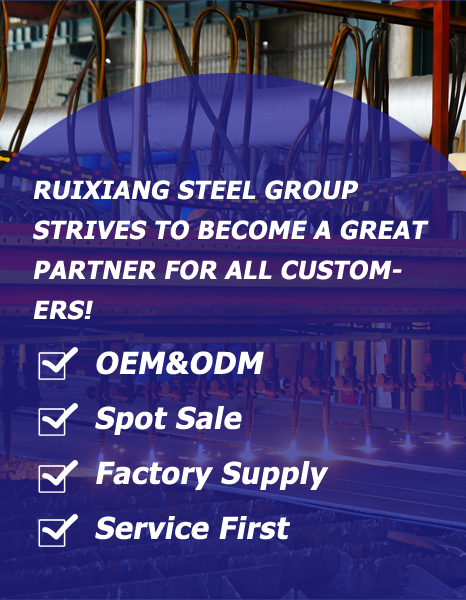Understanding Paint Coating Thickness Standards for PPGI SteelPPGI (Pre-Painted Galvanized Iron) steel has revolutionized the construction and manufacturing industries with its superior corrosion resistance, aesthetic appeal, and cost-effectiveness. While the galvanized base provides fundamental protection, it's the
paint coating system that determines the final performance and durability. Understanding paint coating thickness standards is essential for selecting the right material for your specific application.
The Structure of PPGI SteelPPGI consists of a multi-layer composite structure, beginning with a
galvanized steel substrate that provides primary corrosion protection. On top of this substrate, a chemical conversion layer is applied to enhance paint adhesion. Following this, a primer layer creates the foundation for the topcoat, which consists of the final paint layer that delivers color, texture, and additional weather resistance .
The entire system's performance depends on the synergistic relationship between these layers, with the paint coating thickness playing a critical role in determining durability, color retention, and resistance to environmental factors.
Standard Paint Coating Thickness RangesIndustry standards establish clear guidelines for PPGI paint coating thickness to ensure consistent performance across different applications:
Standard-grade PPGI: Typically features a total paint coating thickness of 20-25μm (microns), with a common distribution being approximately 16μm for the topcoat and 5μm for the back coat .
Premium-grade PPGI: For enhanced durability, premium applications may specify thicker coatings up to 25μm on the front side and up to 25μm on the back side, providing extra protection in demanding environments .
Specialized applications: Specific uses may call for customized thicknesses. For instance, some industrial-grade PPGI can have front coatings ranging from 15-25μm and back coatings from 5-15μm, depending on the exposure conditions and performance requirements .
These thickness ranges represent the optimal balance between protection, cost, and formability, having been established through extensive testing and field performance data.
Factors Influencing Coating Thickness SelectionEnvironmental ConditionsThe operating environment significantly impacts coating thickness requirements. Coastal areas with high salt exposure, industrial zones with chemical pollution, and regions with intense UV radiation typically necessitate thicker coatings to maintain protection throughout the product's service life.
Application RequirementsDifferent applications impose varying demands on PPGI performance:Architectural roofing and cladding: Requires coatings that withstand weather exposure while maintaining aesthetic appeal
Appliance manufacturing: Needs coatings that resist scratches, chemicals, and frequent cleaning
Specialized industrial applications: May demand customized thicknesses for unique corrosion resistance or durability needs
Paint Chemistry and FormulationThe type of paint resin significantly influences the required coating thickness:
Polyester (PE): Standard resistance with good flexibility and cost-effectiveness
Silicone Modified Polyester (SMP): Enhanced durability and color retention
High Durability Polyester (HDP): Superior weather resistance for harsh environments
Polyvinylidene Fluoride (PVDF): Exceptional chalk and fade resistance, typically used in premium applications
Each resin type has different protective properties at varying thicknesses, allowing for optimization based on specific project requirements.
Measuring and Verifying Coating ThicknessAccurate measurement of paint coating thickness is essential for quality assurance. Industry-standard methods include:
Digital coating thickness gauges: Non-destructive instruments that use magnetic or eddy current principles to measure dry film thickness
Destructive testing: Cross-sectional analysis under microscopy for precise measurement of individual layers
Ultrasonic testing: Advanced methods for multi-layer coating systems
Professional manufacturers like Ruixiang Steel Group implement rigorous quality control protocols, with measurements taken at multiple points across the coil width and length to ensure consistency.
Industry Standards and CompliancePPGI manufacturers adhere to established international standards that specify coating requirements:
ASTM A653: The standard specification for steel sheet, zinc-coated by the hot-dip process
JIS G 3312: Japanese industrial standard for pre-painted galvanized steel sheets
GB/T 12754: Chinese national standard for color coated steel sheets
These standards provide frameworks for quality consistency and performance predictability across different manufacturers and regions.
The Relationship Between Coating Thickness and PerformanceCorrosion ResistanceAdequate paint coating thickness creates an effective barrier against moisture, oxygen, and corrosive agents. Thicker coatings generally provide longer protection, though the relationship is not linear – beyond a certain point, additional thickness yields diminishing returns while increasing cost and potentially reducing flexibility.
Durability and LongevityProper coating thickness directly impacts product lifespan by:
Resisting UV degradation: Thicker coatings contain more pigments and resins that absorb UV radiation
Maintaining color retention: Adequate film thickness prevents early fading and chalkiness
Withstanding mechanical stress: Thicker coatings better resist minor impacts and abrasion during installation and service
Formability and FabricationWhile thicker coatings offer enhanced protection, they can affect formability. Balance is crucial – excessively thick coatings may crack during bending or forming operations, compromising protection. Manufacturers typically optimize coating thickness based on the intended fabrication requirements.
Cost ConsiderationsCoating thickness directly impacts material costs, with thicker coatings commanding higher prices due to increased raw material consumption. However, lifecycle cost analysis often justifies premium coatings for applications where maintenance is difficult or costly, or where early failure would have significant consequences.
Innovations in Coating TechnologyRecent advancements in paint technology have led to developments such as:
High-solids coatings: Providing thicker films in single applications with reduced VOC emissions
Self-healing coatings: Containing microcapsules that repair minor scratches
Advanced resin systems: Delivering superior protection at lower dry film thicknesses
These innovations continue to expand the performance possibilities for PPGI applications while optimizing coating thickness requirements.
Conclusion: Selecting the Right Coating ThicknessChoosing the appropriate paint coating thickness for PPGI requires careful consideration of multiple factors, including environmental conditions, application requirements, aesthetic expectations, and budget constraints. By understanding industry standards and the relationship between thickness and performance, architects, engineers, and fabricators can make informed decisions that optimize both initial investment and long-term value.
At Ruixiang Steel Group, our technical experts leverage decades of experience to help clients select the ideal PPGI specifications for their unique projects. We combine comprehensive testing, strict quality control, and practical application knowledge to ensure our products deliver reliable performance across diverse applications and environments.
 Click:164Edit: Admin
Click:164Edit: Admin Time:2025-10-04 16:15:06
Time:2025-10-04 16:15:06

